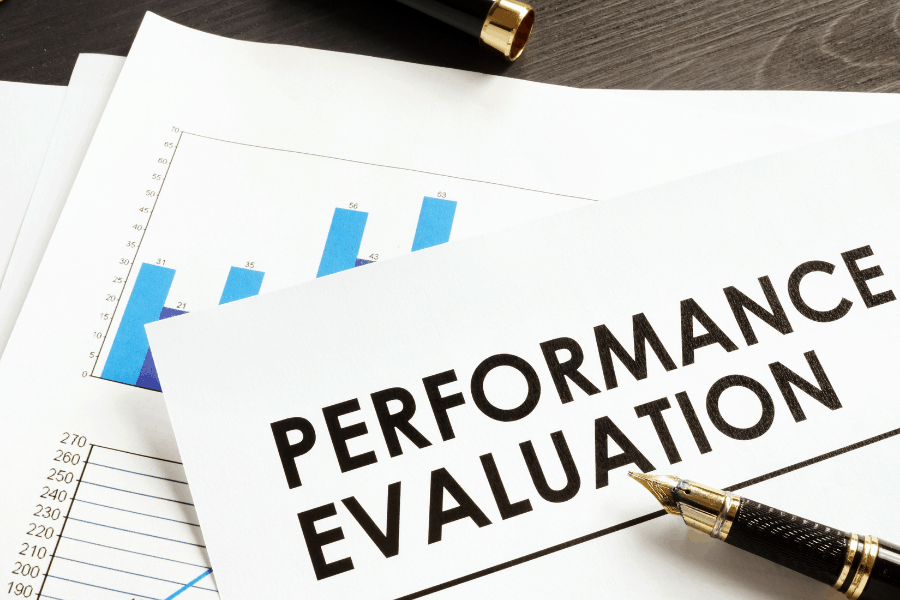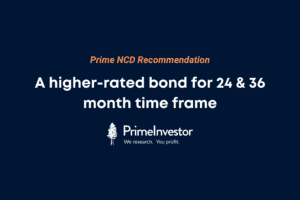“It was the best of times; it was the worst of times”, wrote Dickens a long time ago. There are many reasons why the year 2020 will definitely fit the ‘worst of times’ label. However, don’t tell that to the markets – that saw robust growth, or to the investors – who saw handsome gains, especially in the second half of the year.
For us here, at PrimeInvestor, it’s time to evaluate ourselves and see how we did and how our recommendations fared. And the primary yardstick we use to do so is to see how our Prime Funds performed, with respect to benchmarks and category averages.

In the stock market, even as the year closed out with gains, it is better classified as an abnormal year driven by liquidity. Such markets can be deceptive. It is best not to draw long-term lessons from this year! In the debt market, we saw policy rates crash below earlier floors. Returns soared for some categories, other funds fell to credit risks.
But a good year or one writ with anomalies, we have no excuses! It is time for us to let you know how Prime Funds, our list of recommended funds, performed in 2020.
How we assessed performance
- We picked key buckets in our Prime Funds – Equity-moderate and Equity-high risk, very short-term debt, short term debt and medium- and long-term debt. We also discuss the aggressive equity hybrid category. The passive equity funds we have were bucketed under moderate or aggressive depending on the nature of the index.
- Since we make changes to our list during our quarterly assessment, we have suitably incorporated those in our performance review. The returns were therefore taken for each quarter and the product of the returns taken for the year in reckoning.
- Following the above point, returns are therefore not point-to-point for the calendar.
- Our equity funds were compared with appropriate benchmarks and with the peer set. With debt funds, we took only the peer sets as debt indices are either not comparable or data is not available (paid indices).
- Please note that we have taken a portfolio approach to providing the returns as we cannot provide the returns for individual funds (for the full year) as some would have entered or exited. But we have mentioned the top performers and those that lagged.
Equity funds
Overall, we’re pleased with our performance this year and happy to showcase it to you. But also note that we may not always have a great scorecard to show you every year. In years of stock market falls, our equity funds will likely do well. In years of a very sharp rally, we may well lag. If that sounds odd, hear us out.
Our equity fund calls sits firmly on the philosophy that containing downsides is key to building wealth. Our funds faithfully did this in 2020. But our funds were not the chart toppers in the mad rally of the third and fourth quarters of 2020. They performed well but did not rock the show. It is the first 2 quarters of fall and quick bounce back that held our funds above the crowd this year.
Equity – moderate risk
This includes funds from large-cap, multi-cap, value, and contra funds. Nifty 100 TRI is the benchmark index used. The table below will tell you that Prime funds in the equity moderate risk category beat the index by close to 4 percentage points and the category by 3.5 percentage points.
No surprises on the chart topper – Parag Parikh Long Term Equity – a fund that has been part of our list since our launch. With a whopping 28.3% returns, it was head and shoulders above the index and category.
Canara Robeco Equity Diversified, Invesco India Contra and Axis Bluechip (in that order) came next with returns in the range of 15.7%- 18.3%. Kotak Standard Multicap and Mirae Asset Large Cap, lagged, as their participation in the last quarter rally was limited. This is not surprising considering that we added these funds for their consistency and not for any chart-topping quality.
Overall, this segment put up a commendable performance. But it needs mention that barring Axis Bluechip (high growth strategy and taking overweight positions in index outperformers) and the Axis Nifty 100 index fund, none of the other funds could keep pace with the massive 18.2% returns (till December 21, 2020) of the index in the fourth quarter of this calendar.
If the kind of rally we see continues, we do expect our funds to remain sedate and even lag the index for a good while until valuations get more reasonable. Please be prepared for it. We will not drop an underperforming fund because it refuses to pick expensive stocks. Also, our intention is not to constantly churn your portfolio when such dips happen.
Equity – aggressive
This is a very mixed category. It consists of large & midcap funds, focused funds which take mid-cap/small-cap calls, mid-cap funds and small-cap funds. It is not an easy category to benchmark and so we used the Nifty 500 TRI (which covers large mid and small caps) and also a stiffer benchmark which is the Nifty Large Midcap 250 TRI. We have also given the Nifty Midcap and Small cap indices as additional references.
Here’s how we did:
This segment put up a good show beating the Nifty 500 by a good 5.3 percentage points and the Nifty Large Midcap 250 by 2.1 percentage points. Still, it needs mention that it did not beat the Nifty Large Midcap 250 index by a wide margin. Moreover, it did not beat the category average (consisting of large & midcap, mid cap, and small cap funds).
The reasons are as follows:
- The category average returns are skewed by abnormally high returns of some of the funds in the mid and small cap space. For example, Quant Small Cap fund delivered 66% – entirely out of sync with its category. The other funds from the Quant AMC too delivered abnormally high returns. Many of you have asked us about these funds and we have stated that Quant funds tend to have a very high portfolio churn, with a tactical, almost trading-like strategy. While it delivered this year, we cannot be sure about its consistency especially if fund sizes increase. Their low AUM meant that they did not even enter our filtering criteria. Removing just these funds pulled the category average to 17.1% from 18.2% – and this is now in line with our funds’ average.
- Next, we pick our mid and small-cap funds with the motto of containing downsides. Our chosen funds have low volatility and high liquidity of stocks. Hence, in this space, our aim would be to beat the indices and not the peer sets which are mostly far more aggressive. In fact, in the third quarter rally, barring SBI Small Cap, none of our mid and small cap funds could beat the category average return of 16.3%. But a bit of turbulence in the fourth quarter helped them bounce back and show their mettle against the highly volatile peer set. As said earlier, our funds are geared to provide steady returns and not chart-topping returns. They will come under stress in big bull markets.
Now to talk of the outperformers here. Motilal Oswal Nasdaq 100 FOF, our passive fund, which is otherwise aggressive, was the primary show stealer. With the US markets behaving differently, it contained declines far better than India-focused funds in the first quarter (a reason why you need international diversification). Over 5% depreciation in rupee in the first quarter also helped.
Most of the other funds have been true to form. The only fund where we’re seeing some cloud of concern in Invesco India Growth Opportunities. It has lagged the Nifty 500 in the fourth quarter by a little over 5 percentage points, given its mix of growth and value. As an aggressive performer, this is not something we can ignore for long. We will provide more insights in our quarter ending performance review. Our new addition Union Small Cap also remained very sedate compared with peers in the fourth quarter and needs some examination.
Hybrid equity – moderate risk
In this Prime Funds set, our recommendations have fallen short of the average by nearly 5 percentage points.
The reasons for our underperformance are as follows
- Our initial picks of ICICI Pru Equity and Debt and HDFC Hybrid Equity, which we removed from our list at the end of the half year, lost heavily in early 2020. Both these funds had, until then, been strong performers and consistently in the top quartile. We have explained reasons for underperformance in our earlier quarterly reviews. This was the primary reason for the underperformance.
- Next, we couldn’t have possibly added any of the winners of 2020 in our list as none of them would have passed our research filters in terms of consistency and low volatility. Therefore, we missed adding chart toppers such as Canara Robeco Equity Hybrid, as these funds were earlier uneven performers and came up to the top only recently. Other phenomenal performers such as BOI Axa Mid & Small Cap, JM Hybrid Equity or Quant Absolute are extremely volatile funds.
- For the above reasons, when we removed the 2 underperformers, we were wary of adding more funds to this category given that consistency in performance has been worsening across the board.
- Since we always look at fund portfolios, risk, and volatility when deciding how to classify funds in Prime Funds, we moved ICICI Pru Balanced Advantage that was in our low-risk hybrid category to here as its volatility rose. Compared to hybrid aggressive funds, this fund will deliver lower returns.
Here’s what we have observed in this category.
- First, performance is deteriorating.
- Second, this category’s relevance is declining. Hybrid aggressive funds have been taking very aggressive calls in their equity exposure and can see steep falls during corrections making them unsuitable for short-term horizons. They follow no clear strategy in equity or debt, taking calls based on markets.
- Third, with the advent of the equity savings and balanced advantage categories in a more concrete form than before, the need for equity-like funds with low risk is better met through these funds. And finally, in longer term periods, equity and debt allocations are far more easily met by using pure equity and pure debt funds and have better return potential as well.
Therefore, we will revisit our strategy and recommendations in the hybrid moderate risk category in the coming quarters.
Debt funds
Debt, in the past two years, has been a tricky area. When we make recommendations here, we follow three main principles:
- Go by the minimum time-frame you need to hold a particular fund and go by the fund’s portfolio. This helps us avoid being boxed in by specific categories, look for the best opportunities across categories and blend a variety of strategies.
- Play it safe when time-frames are short and take any risk, whether in terms of credit or in duration, only when the time-frame is long enough for it. Even where we do include funds with higher credit risk, we still stay cautious. We choose only those funds where holding in lower rated papers is within reason, where the papers themselves aren’t concentrated exposures, and where the rest of the portfolio holds strong and/or liquid papers.
- Go for consistency in returns more than portfolio yields, which helps us find those funds that can fit any portfolio at any time and which do not require timing on the entry and exit.
We are happy to note that sticking to our principles has yielded good results this year.
Debt: 3 months to 1.5 years
Since we go by fund portfolios, our recommendations here are a mix of ultra-short, low duration, money market and floating rate funds. We added to and removed from this category based on portfolios and additionally, based on the rate cycle.
As you can see, our fund recommendations have beaten the average by nearly a full percentage point. In debt, and in a category such as this, such outperformance is strong. Do note that the ultra short and low duration categories also feature funds with higher credit risk, which would push up their returns. None of our funds sport such credit risk and yet managed returns.
Our funds have done very well both in the second quarter, when the rate cycle was dipping, as well as the final quarter, when the rate cycle was stabilizing. For example, our call on Aditya Birla SL Floating Rate has done very well; even breaking down performance into different quarters shows that the fund has delivered above-average returns consistently.
We did quite a few changes in this list, given the short-term nature of the funds, the debt market scenario and the rate cycle. We removed Franklin India Savings as the concentration risk was rising. We replaced Kotak Money Market fund, though it was an outperformer, with another money market fund as it had a slightly better performance which will help if the rate cycle turns up.
Debt: Short term – 1.5 to 3 years
This category primarily houses banking & PSU funds and short duration funds. Here’s how our recommendations fared.
As you can see, our funds have beaten the average by 1.3 percentage points. Our call on banking & PSU funds through the Axis and IDFC funds paid off very well, with both shooting high above other banking & PSU funds plus short duration funds. The outperformance was especially strong in mid-2020 when the rate-driven rally was in full swing; this therefore shows that these funds are great ways to blend top credit quality, accrual, and duration strategies. Since we only specify minimum timeframes, these funds can well form part of long-term portfolios as well.
We added in HDFC Floating Rate here, in the second half of the year, given the uncertainty in the rate cycle. Floating rate funds can work regardless of rates moving higher or staying at subdued levels. We picked a fund with a longer maturity for this Prime category, and it has returned above the average since we added it.
Finally, in a testament to the power of strong and stable accrual, our pick here – HDFC Short Term Debt, with its high-quality portfolio – returned far better than the category. The fund already has a long-established ability to deliver above-average returns. But this time around, it additionally took timely calls on small exposure to higher-yielding, lower-rated papers such as PSU bank bonds and those from large corporate houses such as the Tatas. This helped it improve returns. Such careful and marginal exposure to lower-rated papers can sustain returns when the rate cycle is low.
Debt: medium term and long term
Medium term and long term are two different categories in Prime Funds. But given that they more or less pick from the same set of categories and they are all for time-frames of 3 years and longer, we have combined them to assess performance. Here’s how our recommendations fared.
Our recommended funds have delivered 1.9 percentage points above the category average. This is despite funds in the longer duration categories featuring a mix of credit risk or strong duration returns. As with the short-duration category, the strength of high-quality and stable accrual played out well.
The corporate bond funds we have in this list, none of which take credit risk and which have varying portfolio maturities, have uniformly delivered well. Aditya Birla SL Corporate Bond, for example, despite a relatively shorter portfolio maturity, still beat out the category even at the peak of the rate rally in mid-2020. HDFC Corporate Bond is another very steady outperformer through the year.
While we did have Franklin Ultra Short Bond in our 5-year plus category until March 2020 (never in the short term), we wrote an article (before our product release) suggesting reduced exposure to this fund in November 2019 after the Vodafone saga and later removed it from our recommendation on April 17th ahead of the fund shut down.
We also moved the higher-returning, higher-risk SBI Magnum Medium Duration to the long-term category in early 2020 and then removed it altogether in mid-2020. We were already careful on credit risk, since SBI Magnum Medium Duration held just about a third of its portfolio in low-rated papers. But owing to the lockdown-related stress and the high uncertainty, we decided to entirely avoid higher credit risks.
We have been regularly assessing credit and concentration risk regularly across funds.
Not a review exercise
This self-assessment is meant to be an exercise in responsibility and ownership on our part and to let you know how our picks have worked. Please note that this is not a fund review analysis. Avoid shuffling your portfolio based on fund names we mention here. Our quarterly reviews alone should be a guidepost for changes, when required.
Many of you have asked us why we do not have a performance record of the portfolios we have. Since we are less than a year old, what track record can we boast of? 😊 Back-testing hardly tests our real track record, right?
Hence, with our portfolios, we plan to put out the performance once we have some time frame to showcase it. For now, we have shown only Prime Funds, which is the universe of funds we draw from for all our portfolios.
We look forward to the new year and are hopeful of adding to our existing product offerings and lot more hopeful of provide better insights. As always, our motto is to empower you to make better investment decisions.
A happy, healthy, and fulfilling year to you all, from the Prime Research Team. Happy 2021!






35 thoughts on “2020 – How our Prime Funds performed”
Really great work PI research team.
Investments always have their hits and misses – but the fact that you guys have dared to publish your own report card is unique and exemplary. Even the best, long standing and most reputed advisories do not dare to do this. We just don’t have the culture of doing this.
This exercise has helped build more trust.
Still waiting for the Equity advisory service though – it is loooooong overdue now 😀
Have a fabulous year guys
Regards
Raspreet Singh
Hello sir,
Thanks for the appreciation 🙂 We hope to have equity up and running in a few weeks. Wish you a happy new year! Regards, Bhavana
Thank you for the insightful post. Though you have mentioned about not shuffling our portfolios, it certainly gives food for thought.
Wishing everyone at PrimeInvestor a Happy 2021
Thank you, sir! Wish you a happy new year!
Regards,
Bhavana
Pretty honest & candid self assessment of Prime Funds by Team PrimeInvestor … High-lighting the importance of controlling the downside of a fund which would make investment journey less volatile .. ensuring sound sleeps :).
Thank you, sir! Regards, Bhavana
Excellent vetting of own recommendation. Grate efforts and courage. Remember, any one is bound to go wrong but to accept it need the courage and honesty at the time of recommendation!!
Thank you, sir! Regards, Bhavana
Congratulations Team on “passing” with flying colours !
One bit of concern though- you are suggesting, quite correctly, SWP in many Debt portfolios. This being the case, will it not be an issue if there are frequent churn of funds (considering the 3 year period for getting the indexation benefit). I do hope that you are factoring this in your portfolio recommendations as also in your quarterly reviews, especially the retiree portfolios where a long term view is needed to sustain a regular tax efficient income flow through SWPs.
Thanks for your services & best wishes for the New Year…
Hello sir,
With SWPs, you can start withdrawing immediately from the fund, since the ones we recommend for such portfolios are liquid and other very short-term funds. You don’t need to wait for 3 years. There are tax benefits even without the indexation, since you will be paying tax only on the ‘gain’ component and not the entire withdrawal (which is not the case with interest income, since the whole amount is taxed).
With liquid and very short-term funds, and portfolios that use these, we’re especially careful with risks. So unless something drastically changes, you can still continue SWPs. We will always explain what to do with funds we replace. In this year, we’ve replaced funds in these short categories simply because there was a higher-returning alternative given the rate cycle – this doesn’t mean that the earlier fund was poor or needs to be replaced.
Thanks,
Bhavana
Knowledge without action is futile. Thanks for your inputs on both counts. Since intent is that your fund picks stay consistent on returns and not necessarily top charts, here is wishing “Prime funds” churn less and offer more peace to us in 2021.
I am a newbie to investments and PrimeInvestor portal.
I am happy that I gained good knowledge of mutual funds in a short span of time.
My kudos and respect to the team for coming up with this article !!!
Indeed, I would like to start the new year with good investment plan with the inputs from the portal.
Wish the PrimeInvestor team a very happy new year 2021 and Pongal !!!
Thank you for your kind words and wish you a very happy new year and Pongal! thanks, Vidya
Congrats 💐 Wish you all happy new year 2021💐
Thank you sir! Wish you alike. Vidya
Hi Team,
Thanks for such a good score card,In this difficult year. Was looking for some comment on Sbi magnum constant maturity fund under debit long term. Any note can be added to this fund ?
Congrats for your great work and wish you very happy new year
Thanks,
VinothKumar M
SBI Constant Maturity beat the category avg by a good 2.78 percentage points. But you need to keep in mind that it is less aggressive than the other 2 constant maturity funds on the upside and hence lagged them in 2020. SBI usually manages downsides better. THis quality might come in useful when the rate cycle moves up. thanks, Vidya
Thanks Vidya and wish you very happy new year!!
Hi Guys,
Thanks for sharing this. Retrospecting can help in the improvement 🙂
BTW it can be great if we can have a tool where your clients can upload Mutual fund statement and can do this kind of year on year review.
Comments are closed.